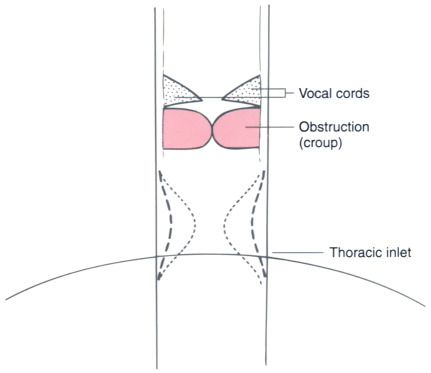Figure 60-11
Infants and young children have highly compliant airway
structures. With normal respiration, some dynamic collapse of the extrathoracic
upper airway occurs (broken line). When a child
has upper airway obstruction (as in epiglottitis, laryngotracheobronchitis, and extrathoracic
foreign body) (shaded area) and struggles to breathe
against this obstruction, dynamic collapse of the trachea increases. This increase
in dynamic collapse (dotted line) augments mechanical
obstruction of the airway. Therefore, until the airway is secured, it is important
to avoid procedures that will upset the child. (Redrawn with modification
from Coté CJ, Todres ID: The pediatric airway. In
Coté CJ, Ryan JF, Todres ID, et al [eds]: A Practice of Anesthesia for Infants
and Children, 2nd ed. Philadelphia, WB Saunders, 1992, p 55.)

